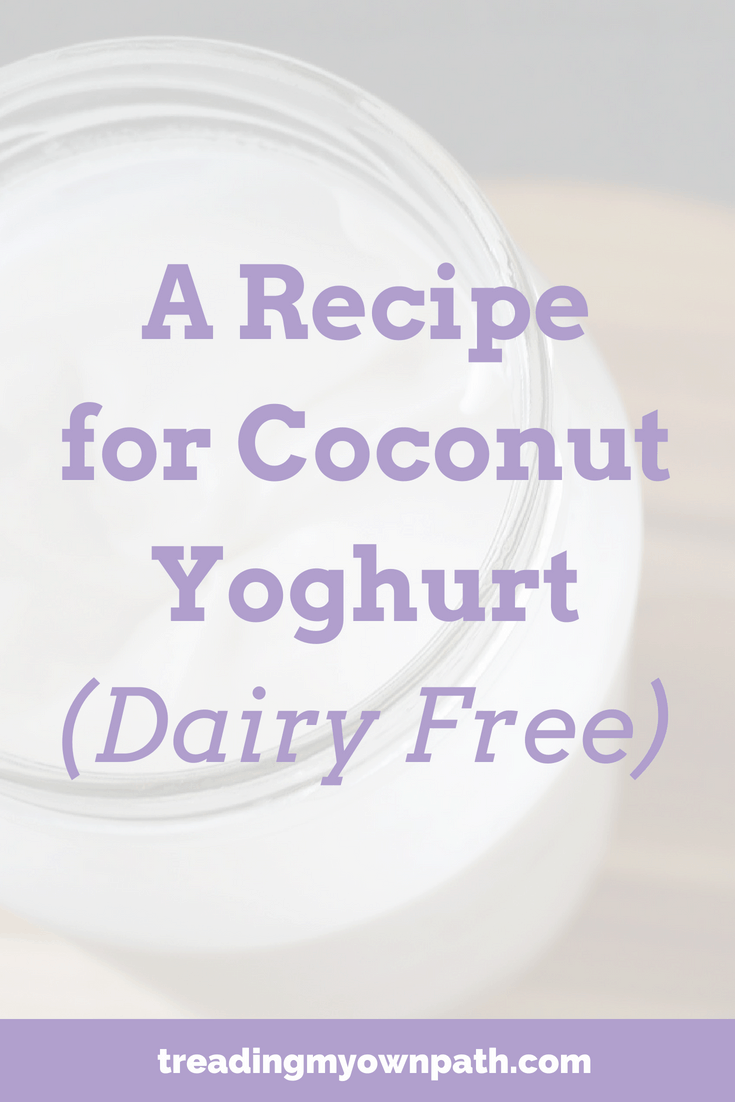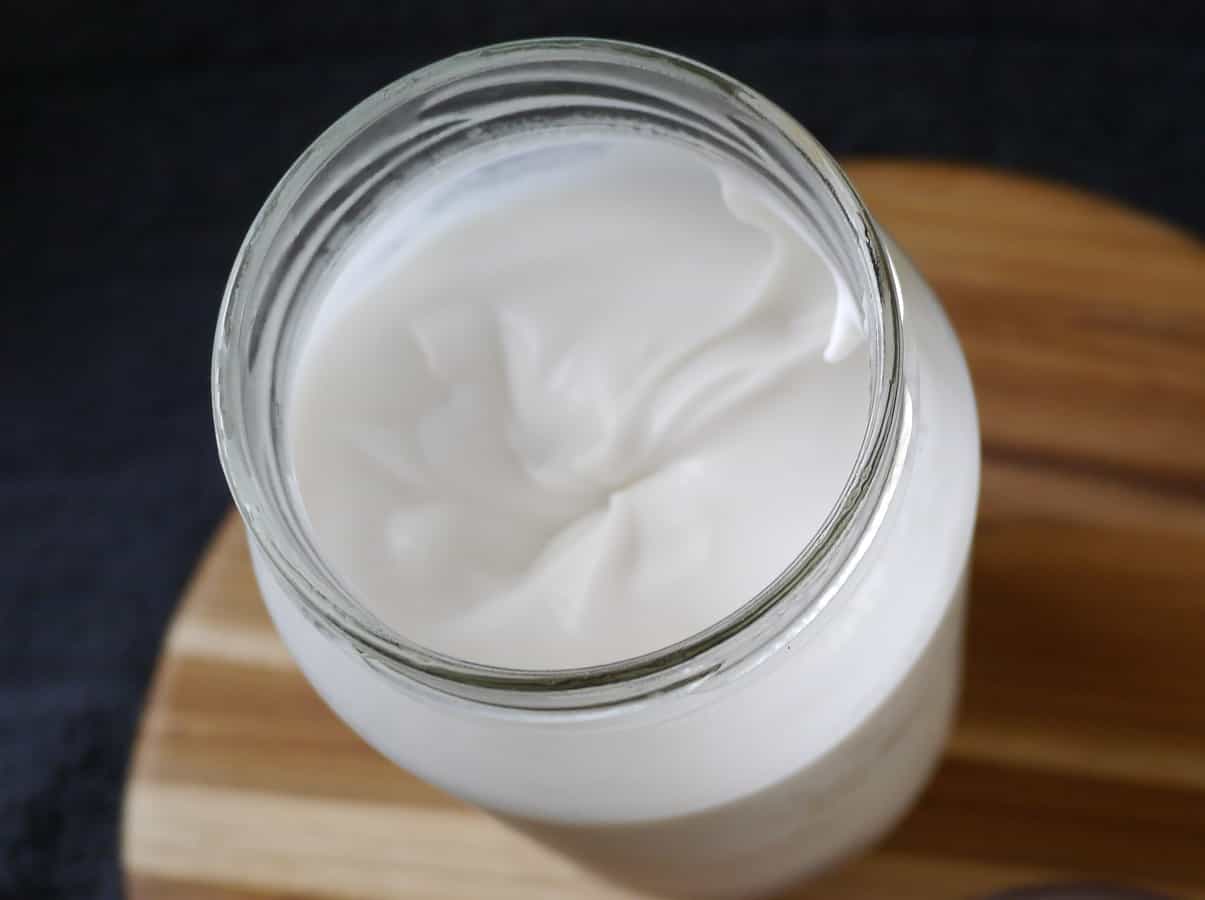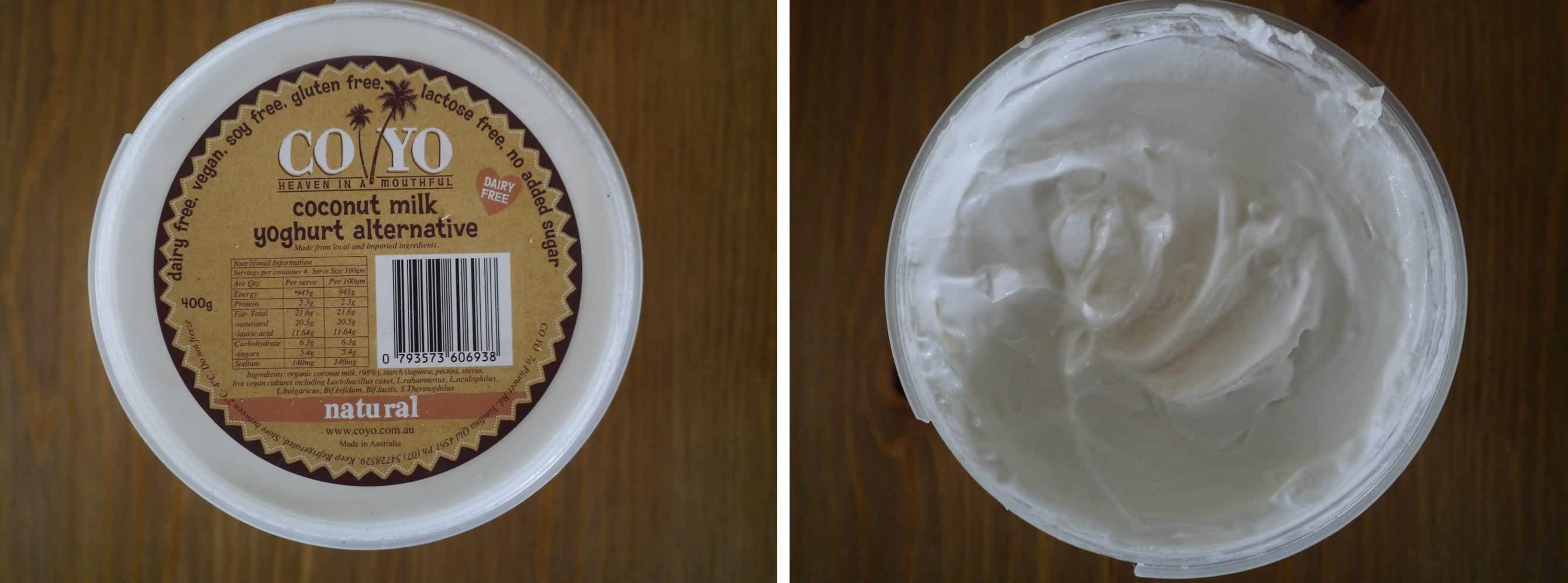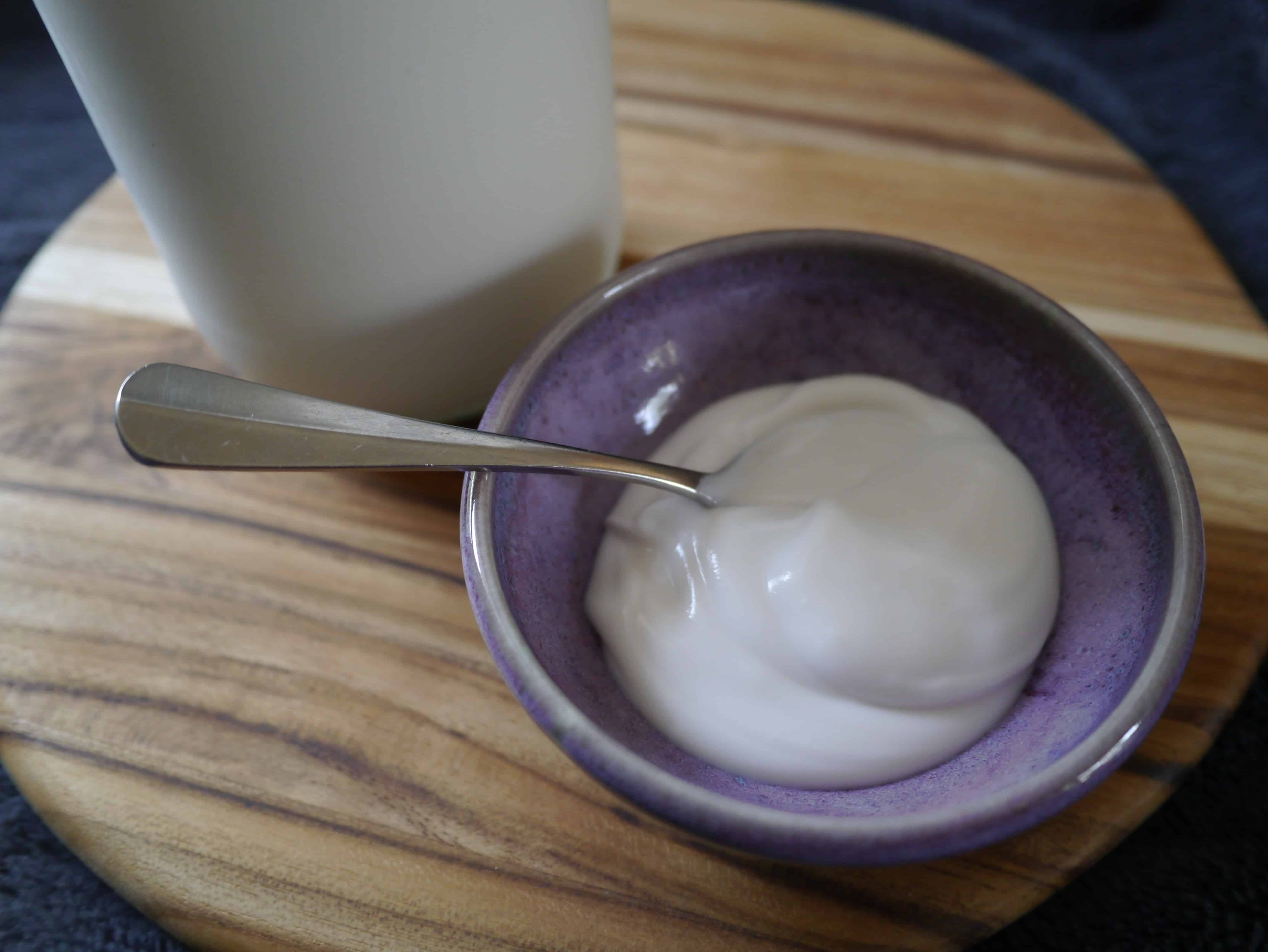A Recipe for Coconut Milk Yoghurt (Dairy Free + Plant Based)
I did something this month that I haven’t done for over a year. I deliberately bought something in a plastic container.
Oh, the scandal!
The product in question is a dairy-free yoghurt alternative called CoYo, made from coconut milk and full of probiotic cultures. I’d seen the name pop up in various places and was intrigued. Since being advised to cut out dairy from my diet as much as possible, yoghurt is something I miss, and I particularly believe in the benefits of probiotic foods for maintaining a healthy gut. This product seems like a win-win… apart from the packaging. Of course, I questioned whether I would be able to make it at home. When I saw it in stock in my local health food shop, I was intrigued enough to buy it.
I have to say, CoYo tastes amazing. If I was to describe the flavour, I would say it has the yoghurty-ness of yoghurt, and the coconuty-ness of coconut milk. (Does that make it any clearer?!) I guess what that means is, it has the tangy, slightly acidic taste of yoghurt, but the creamy smooth richness of coconut milk, with that exotic coconut flavour. It is also super smooth and literally melts in my mouth. It is also a stunning bright white colour – like coconut.
It also has a pretty amazing price tag. One small 400g tub cost me over $13! Indeed, I have suffered for my sin.
For reasons of both price and plastic packaging, I can’t justify buying this again. However, now I know how good it is I can try to make my own (and I have a benchmark to measure against), and I can use the CoYo as my starter culture. Its deliciousness has only made my resolve to make my own stronger! I want this in my life!
After a couple of attempts at recreating it, I’m now pretty happy with the recipe I’ve come up with. This recipe makes 1 litre, and should keep in the fridge for 2-3 weeks.
How to Make Coconut Yoghurt
Ingredients:
2 x 400ml tins of organic coconut milk/cream
200ml water (to make up to 1 litre)
8 tbsp arrowroot powder (also called tapioca)
20 drops stevia
1 tbsp CoYo (or other starter culture)
Method:
Blend the arrowroot, coconut milk and water together briefly to remove any lumps.
Heat to above 80ºC for several minutes to allow the mixture to thicken, stirring with a spoon.
Cool to 45ºC.
Add stevia and stir.
Add a spoonful of Coyo to pre-warmed thermos flask. Add a cup of the coconut milk mix to the flask and stir well. Fill the flask halfway and stir again. Add the rest of the mix, stir a final time and seal the lid.
Leave for a minimum of 12 hours but preferably 24 hours.
Pour into a glass jar and store in the fridge.
Notes:
I use Woolworths (Australian) organic coconut cream which comes in a BPA-free tin. It’s one of the few items I still buy at the supermarket and it’s one of the better organic brands that I’ve tried… although I’d love to find a independent brand or make my own in the future.
I used arrowroot and stevia as these were what CoYo lists as its ingredients. It may be possible to use other thickeners. The stevia is to give the friendly bacteria a food source. Other sugars might work too, I just haven’t tried them yet.
I used CoYo as the starter culture as I already had it but if you’re not lactose-intolerant or vegan you could use ordinary live yoghurt. Another option is to use a vegan probiotic capsule.
Coconut yoghurt takes a lot longer to culture than cow’s milk yoghurt. I find that leaving it for 24 hours gets better results.
I have also found that the yoghurt thickens over time, something that doesn’t happen with dairy yoghurt. I don’t know why this happens, but if your yoghurt is a bit thin, you should find it thickens up after a few days.
Obviously, once you’ve made your first batch you can use this as a culture for future batches – no need to keep buying things in plastic containers!
[leadpages_leadbox leadbox_id=1429a0746639c5] [/leadpages_leadbox]







It is delicious isn’t it! But I too make my own very similar to yours but with a little maple syrup instead!
I bought some stevia because I’d seen it mentioned in a few places. But for $20 for a small bottle, I don’t think I’ll be buying again! I find the taste a bit strange and I’m not convinced by these super refined “healthy sugars” – seems to good to be true! Do you use 1 tbsp maple syrup? If not how much?
Usually 2 for a litre of yoghurt. It is not too sweet and helped my kids adjust to it instead of dairy!
I might have to give this a try. I have made regular yogurt in a crockpot before, but this one sounds delicious. I personally like Stevia but only by the one with no additives. Thanks for a great recipe.
Thanks for this – I’ve been making almond milk yogurt but the recipe I found calls for corn starch and the arrowroot sounds like a better alternative. Coconut milk is getting popular here in the dairy case, but I hadn’t seen any yogurt recipes.
Almond milk yoghurt?! Oooh I’ve never heard (or thought) of that! How do you make it?
I googled recipes and have been using this one: http://afairytalecomesalive.blogspot.com/2013/04/recipe-almond-milk-yogurt.html
It isn’t vegan though ( it uses honey) so I may try maple syrup. I bought a small almond milk yogurt for starter, and it made several batches. It makes a thick pudding-y yogurt, not tangy like milk yogurt. I see there are some recipes with agar-agar so I may try those next. Just this week I noticed our local Whole Foods markets now have almond milk and flax milk with added protein (pea protein), so they’re a better match for soy milk in that department. Your coconut milk yogurt looks delicious.
Thanks for that, I will have to try it sometime : )
This looks so yummy! I am definitely going to give this recipe a shot!
Thank you for sharing, Zhenya
It is really good, you definitely should try it : )
Brilliant! Thanks :)
I’ve been making oatmilk, which is quite thick and creamy, but separated when making yoghurt. Adding thickener before adding culture might work the same as in coconut yoghurt. Great!
I use 2 cups of oats to 4 cups of water, soaked 12 to 24 hours, then blended. No need to strain, this is very thick and creamy, and coul be used as cream, with a bit of sweetener. If I want milk I just add more water. This keeps well in fridge, but needs shaking up, as it separates.
If I don’t have a flask big enough to store a litre of water, would a jar be ok? Or does it have to be able to retain heat well?
I bought the non-dairy yoghurt making kit from Go Vita made Green Living Australia ($14). It’s basically a culture and instructions, and is good for 100 litres of yoghurt. So far I’ve made a couple of batches and am happy with the results. I use the Woolies Macro brand of coconut cream too and scoop out just the thickened part. I warm it in a microwave to smooth the lumps and stir in the culture, and the raw Brazilian sugar.
I could use a thickener and have ordered Green Living’s Smooth Gel, though I came home with a container of $1.50 arrowroot last night. I’m trying to find out if I can just stir it in cold – don’t want to experiment and waste $5 of coconut cream.
Another awesome coconut yoghurt is Nudie’s. I love the vanilla and was buying 3 x $7 tubs a week, hence the DIY. My electric yoghurt maker came from China ($16) and is good for 1 litre/batch. I verified it’s a constant 32 degrees with my Chinese food thermometer. So far so good.
My first try was with probiotic capsules and I made some weird coconut beer/cheese. I learned the culture is critical to the taste. No surprise. The Green Living people say it’s not a great idea to use another yoghurt as a starter because you could be breeding wild cultures that float around in the air with unpredictable results. My jury is out on that one.
Thanks for your tips.
Yeh! I’ve converted my husband from dairy to coconut yogurt. Yum, I used 2Tbs maple syrup but will drop it down to one next time, made it in my TM. Thanks Lindsay for sharing.
Thank you however arrow root (Maranta arundinacea) and tapioca or dried manioc( Manihot esculenta) are different products – I think you put tapioca starch in your recipe
Yes they are, but confusingly at the supermarket in Australia they are sold as one product with both labels (see here: https://www.mckenziesfoods.com.au/product/mckenzies-arrowroot/ ) – so at the supermarket you’d look for arrowroot/tapioca flour. I shop at the bulk store and I buy tapioca flour because it’s cheaper and I prefer it.
Did this TASTE like Coyo? I don’t know what it is about that particular brand, but me and my family cannot get enough of it. However, with four of us, the tubs don’t last long and boy they are expensive!!
Arrowroot and Tapioca are completely different thickeners. They come from different plants, both likely work, but there may be a difference in the result.
Yes they are, but confusingly at the supermarket in Australia they are sold as one product with both labels (see here: https://www.mckenziesfoods.com.au/product/mckenzies-arrowroot/ ) – so at the supermarket you’d look for arrowroot/tapioca flour. I know I know, it doesn’t make sense! I shop at the bulk store and I buy tapioca flour because it’s cheaper and I prefer it.